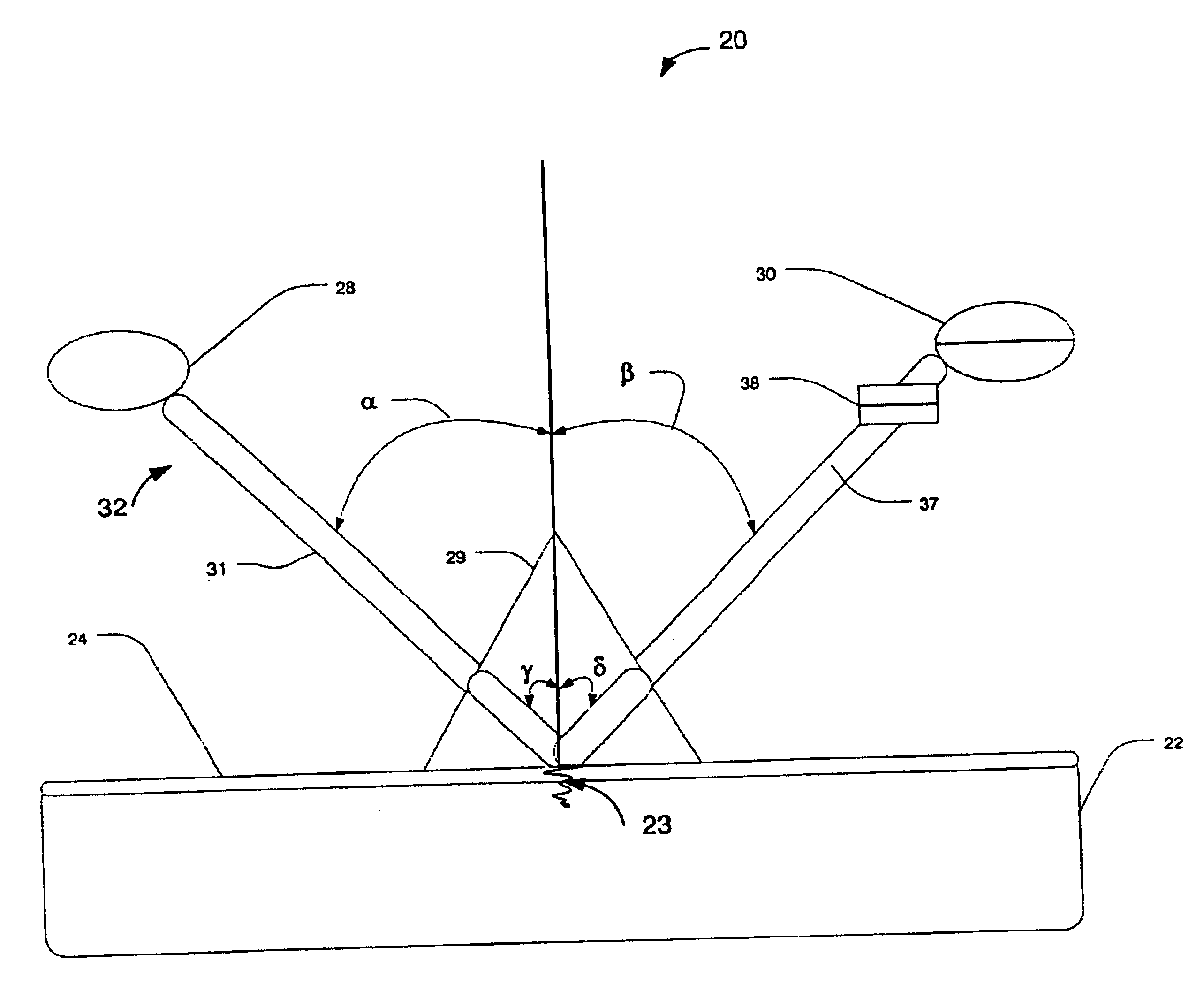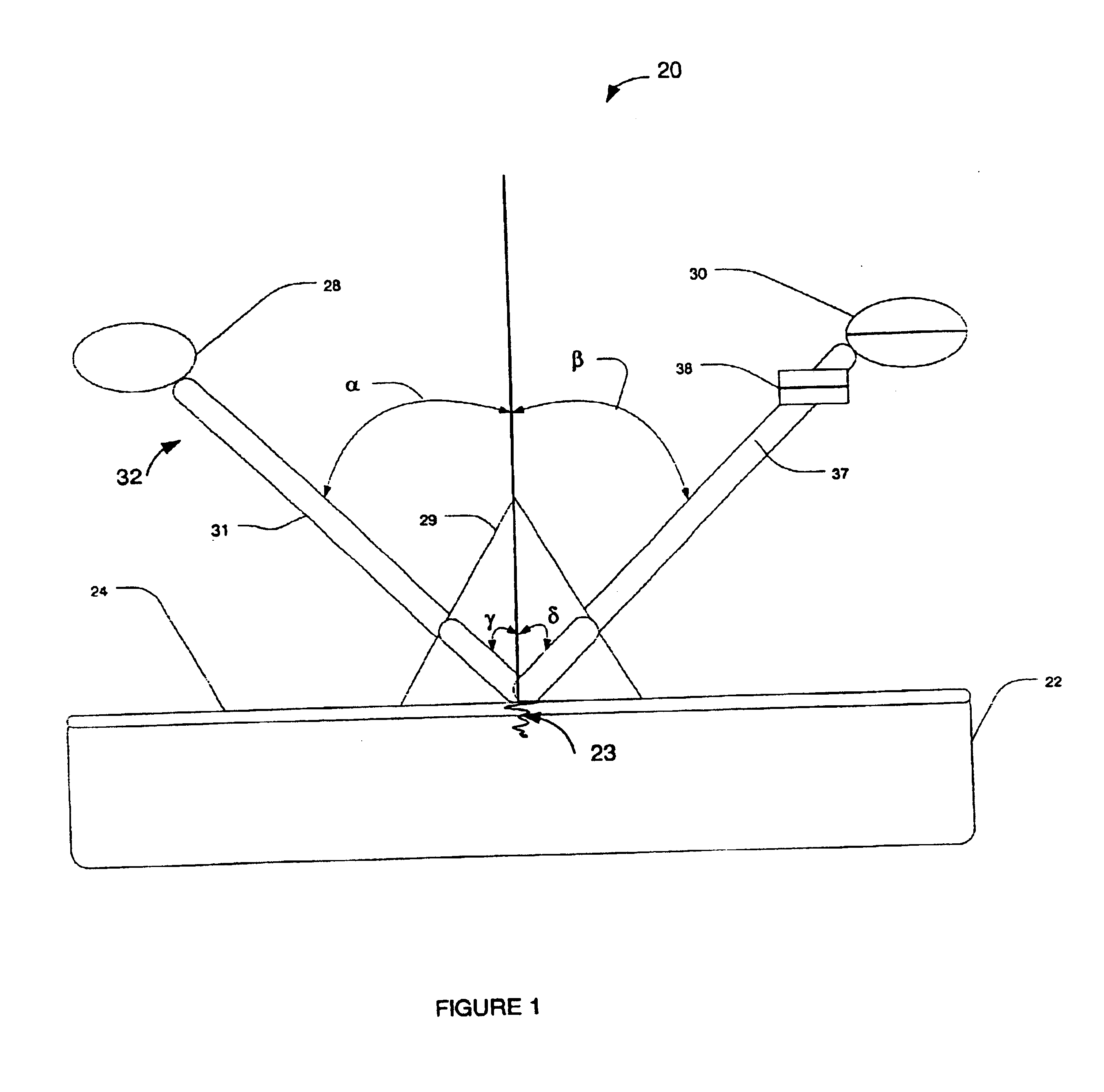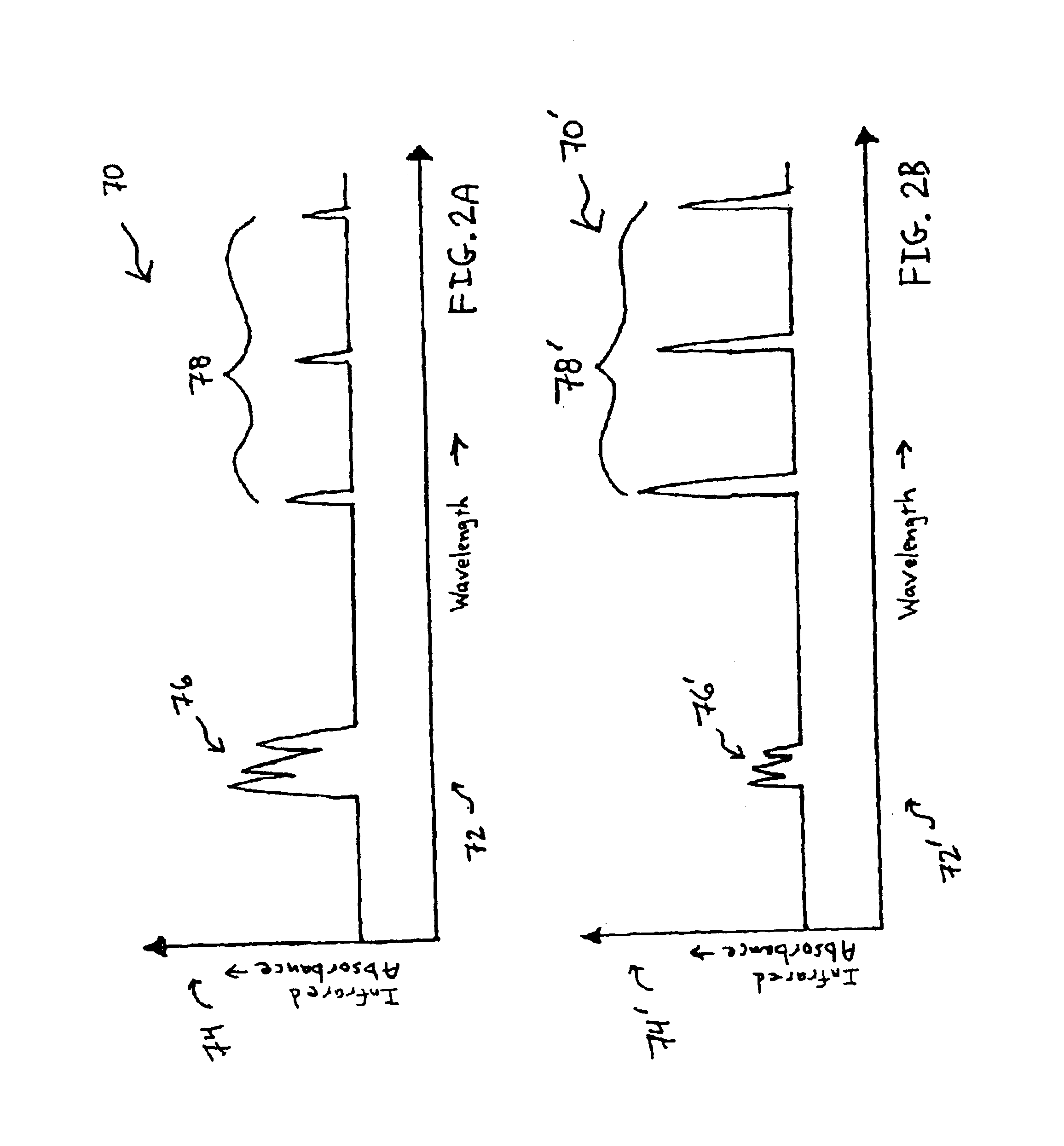Method of measuring amount of chemical cure and amount of surface contamination using infrared absorbance
a technology of infrared absorbance and chemical cure, which is applied in the measurement of optical radiation, x/gamma/cosmic radiation, instruments, etc., can solve the problems of difficult to determine the cure state or cure amount, the surface may not adhere to high solids paint systems, and the inability to give desired results, etc., to achieve a simple and reliable method
- Summary
- Abstract
- Description
- Claims
- Application Information
AI Technical Summary
Benefits of technology
Problems solved by technology
Method used
Image
Examples
Embodiment Construction
[0019]The present invention provides a method for nondestructively determining an amount or degree of chemical cure for coatings such as paint, primer, sealants, or other coatings, or for nondestructively determining an amount of surface contamination, by correlating a relationship such as ratio of or difference between infrared absorbance of the coating at two predetermined wavelengths to the amount of cure or contamination. The cure amount measurement can be made in percent completion of the cure process or any other appropriate measure. The measurement of amount of contamination on a surface or degree of cleanliness of a surface is normally expressed in terms of units such as milligrams per square foot of contamination found. Both measurements entail calibrating the infrared absorbance of the one or more bands, at specific wavelengths, to the amount of cure or contamination.
[0020]By way of overview and with reference to FIG. 1, one presently preferred embodiment of the present in...
PUM
| Property | Measurement | Unit |
|---|---|---|
| wavelength | aaaaa | aaaaa |
| wavelength | aaaaa | aaaaa |
| wavelength | aaaaa | aaaaa |
Abstract
Description
Claims
Application Information
 Login to View More
Login to View More - R&D
- Intellectual Property
- Life Sciences
- Materials
- Tech Scout
- Unparalleled Data Quality
- Higher Quality Content
- 60% Fewer Hallucinations
Browse by: Latest US Patents, China's latest patents, Technical Efficacy Thesaurus, Application Domain, Technology Topic, Popular Technical Reports.
© 2025 PatSnap. All rights reserved.Legal|Privacy policy|Modern Slavery Act Transparency Statement|Sitemap|About US| Contact US: help@patsnap.com



